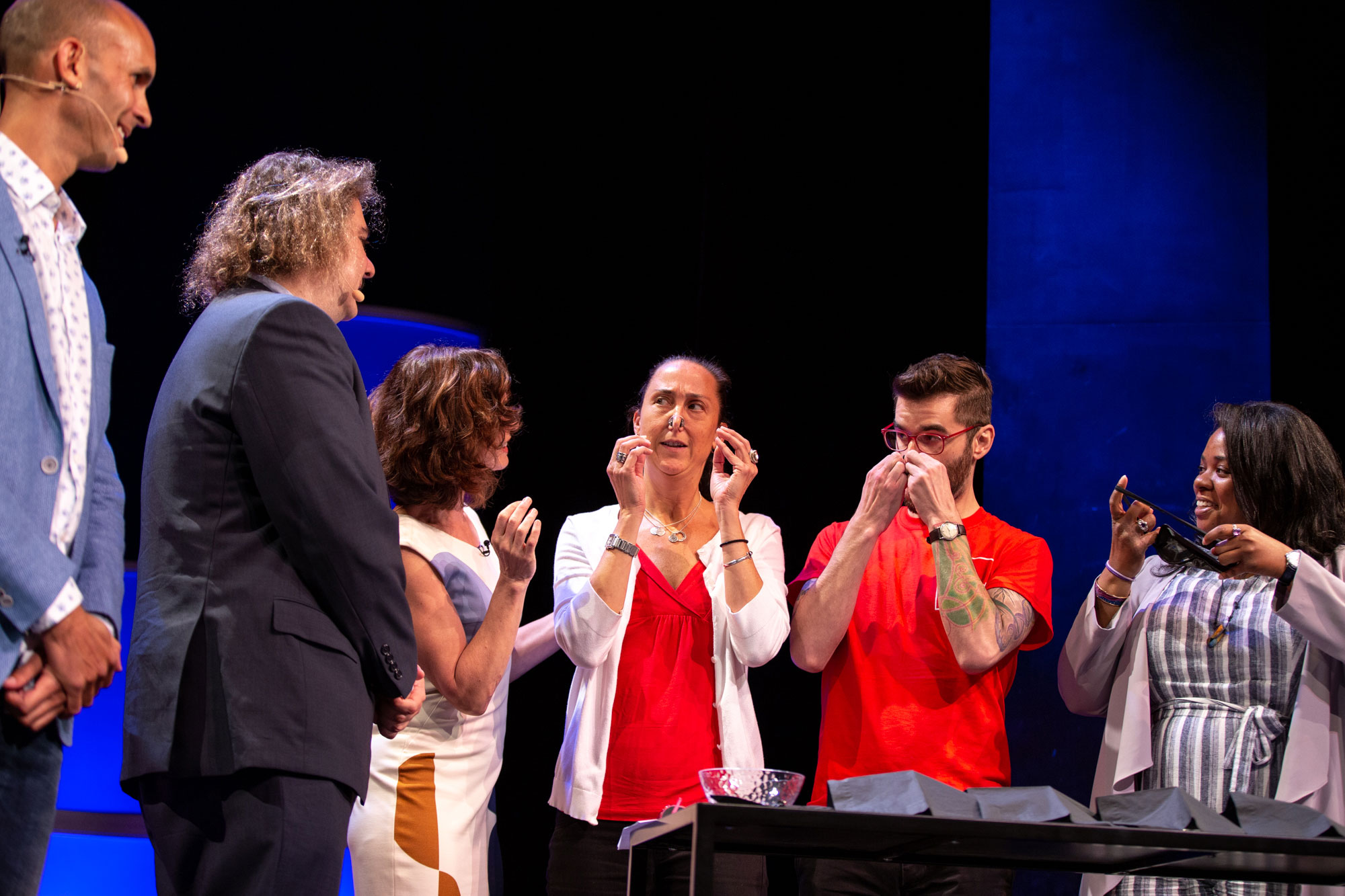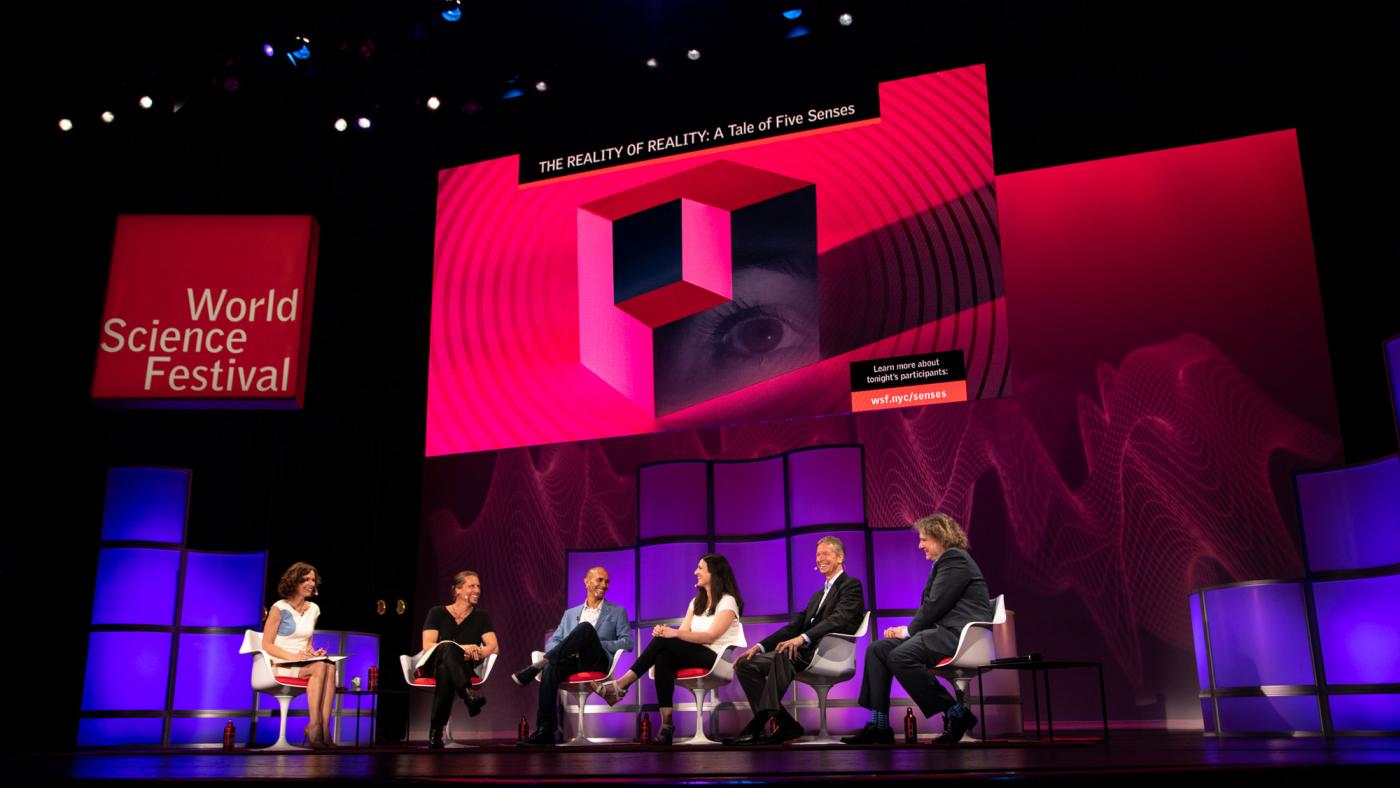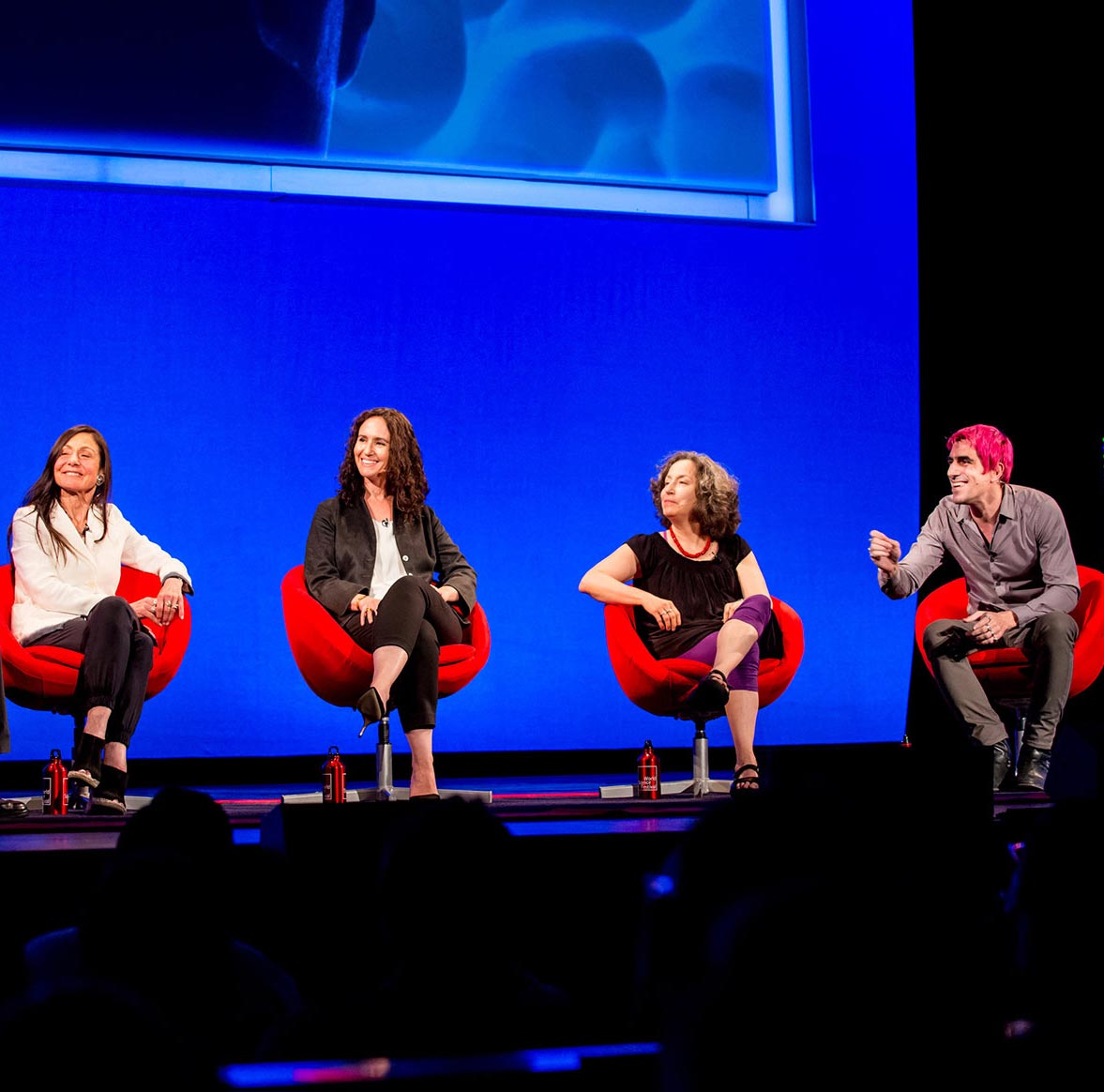At this year’s World Science Festival, in front of a packed auditorium at John Jay College, a group of scientists announced some startling news: The things we see and experience in our everyday lives, though they seem quite real to us, may not be real at all.
Standing on stage, Beau Lotto, PhD, a professor of neuroscience at the University of London and visiting scholar at New York University (NYU), explained: “Our brains did not evolve to sense reality; they evolved to give us what is useful for our survival.”
The goal of the event, titled ‘The Reality of Reality: A Tale of the Five Senses,’ was to challenge our notion of how we navigate the world around us. Moderated by award-winning journalist Elizabeth Vargas, the panel of scientists discussed the role that our five senses — smell, taste, sight, hearing and touch — play in making sense of the world. They also explored our brains’ inherent quirks that can sometimes trick those senses.
[Illusions] should not be viewed as quirks or mistakes, but rather an intriguing window into how we perceive the world at all times.
To begin, Dr. Lotto presented the audience with a series of visual and auditory illusions. The crowd tried to guess the perceived brightness of two sets of squares, and the words spoken in a garbled bit of audio. Audience members largely guessed wrong, setting the stage for a lively discussion about the mechanisms behind these mind-bending tricks.
Dr. Lotto was then joined by the other panelists: Anil Seth, PhD, professor of cognitive and computational neuroscience at the University of Sussex, Christine Constantinople, PhD, assistant professor of neuroscience at NYU’s Center for Neural Science, Donald Hoffman, PhD, professor of cognitive science at the University of California, Irvine and Stavros Lomvardas, PhD, neuroscientist and principal investigator at Columbia’s Mortimer B. Zuckerman Mind Brain Behavior Institute.
Dr. Seth argued that the way our brains attempt decipher these illusions should be considered a feature, not a bug.
“They should not be viewed as quirks or mistakes,” he said, “but rather an intriguing window into how we perceive the world at all times.”
“In fact, smell itself is an illusion,” added Dr. Lomvardas, whose Zuckerman Institute lab studies the science of olfaction, our sense of smell. “The scents that enter our nose are just combinations of chemicals. And those chemicals do not have any inherent meaning. Instead, our brains choose to assign meaning to them.”
This is why, he added, a scent that is pleasing to one person may be revolting to another.
The fact that illusions permeate our sensory experience led Vargas to ask: “If everything is an illusion, how do we account for that fact that so many of us see the same reality?”
To answer, Dr. Hoffman used the analogy of a computer desktop interface.
“The reason we agree is because we all have the same interface shaped by natural selection,” he explained. “Just like all Apple users have the same computer desktop interface, and that interface can be recognized from user to user.”
Whether reality is indeed an illusion perpetuated by our brains, as Dr. Hoffman proposed, remains to be seen. But the reality that we experience each and every day is what we must use to survive in our environment. To that end, the panel then turned their focus to the biological mechanisms that guide our senses.
One of the central questions here revolved around how our brains combine real-time sensory information — what we see, touch, taste, hear and smell — with our memories and previous experiences.
“Sometimes the [sensory] evidence you have to work with is bad, such as if it is dark and you’re trying to make out a particular shape,” said Dr. Constantinople. In those cases, she said, it may be better to rely more heavily on our previous experiences than senses.
“There’s a whole field of computational neuroscience called Bayesian inference that describes — in an elegant equation — how we combine expectations, called ‘priors,’ with sensory evidence,” Dr. Constantinople continued. “So, if the quality of sensory evidence is bad, you rely more on your priors, and vice versa.”
Our senses themselves also often work in concert, which is critical to survival. To demonstrate this, Dr. Lomvardas called four volunteers from the audience. Given blind folds and nose plugs, the volunteers were fed peanut butter, strawberries and onions in sequence and asked to guess what they ate. Without the aid of their eyes, nose or fingers, the volunteers often guessed wrong.
“This illustrates just how important sight, smell and touch is to our ability to taste our food,” said Dr. Lomvardas, who is also a professor of biochemistry and molecular biophysics and of neuroscience at Columbia’s Vagelos College of Physicians and Surgeons.

Drs. Seth (left) and Lomvardas, along with Vargas (center) demonstrate the integration of the taste, sight, smell and touch with audience volunteers (Credit: World Science Festival / Greg Kessler).
As a follow up, Dr. Lomvardas then demonstrated how our senses can be tricked. He gave another volunteer a tablet that dissolved in her mouth. After donning a blind fold and nose plugs, she was asked to take a sip of a mystery liquid. She described the drink as sweet, “like sweetened lemonade.”
In fact, the volunteer had been sipping sour vinegar. The mystery tablet, it turned out, containing the chemical miraculin. Miraculin suppresses the tongue’s sour taste buds and boosts the sweet. This means that even the sourest of drinks, in this case, vinegar, tastes sweet — if only temporarily. The effect wears off after an hour, though Dr. Lomvardas added apologetically: “I hope you don’t have dinner plans after this.”
The conversation then turned to the more extreme examples of senses playing off each other, including a condition called synesthesia. Synesthesia exists in about 4% of the population, and occurs when one sense actually triggers another.
The most common type of this condition is called grapheme-color synesthesia, in which a person will always associate letters or words with a specific color. While the precise mechanisms that drive synesthesia are not yet known, Dr. Seth said that some evidence has suggested that this condition may in fact be present in all of us from birth, and is something that we “grow out of” as we get older.
As the evening concluded, the focus returned to fundamentals of the brain itself. And while the debate over the brain’s perception of reality may be unresolved, the panel were in awe of the feats that the brain can accomplish.
Indeed, the brain guides our most complex feelings of love, hate, guilt, morality — even the nature of our own reality. “But at the end of the day,” concluded Dr. Lomvardas, “our brains are simply a collection of cells, sending electrical signals back and forth to each other.”


